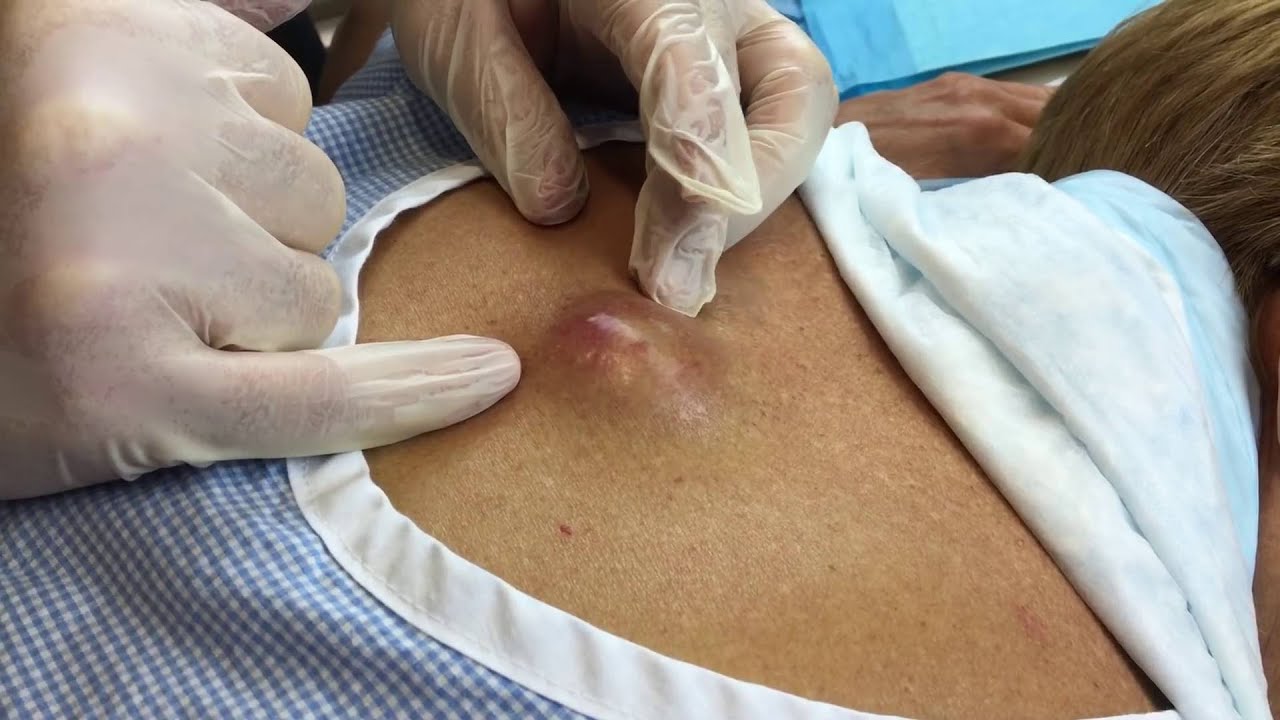
The term “sebaceous cyst” is no longer common. Instead, healthcare professionals call them epidermal cysts, keratin cysts, or epithelial cysts, according to American Family Physician.
They do not tend to be painful or tender unless they become inflamed, damaged, or infected. Infections can occur if the cyst bursts.
This article looks at how to remove and treat skin cysts, as well as their causes and potential complications. The article also provides some pictures to help identify them.
Most skin cysts do not need treatment, and the best course of action is usually to keep them clean and not interfere with them. That said, a doctor may suggest removal if a cyst is causing discomfort.
This might be because of infection, because the cyst gets in the way of everyday activities, or because it is in a prominent location. Removing a cyst can leave a small scar.
When removing a cyst, the doctor will aim to remove it completely, as the cyst might form again if part of the sac wall remains on the skin.
Infected cysts may require further treatment. It is best to avoidTrusted Source removing a cyst when it is actively inflamed.
Cyst removal at a doctor’s office involves:
- a local anesthetic, to numb the area
- antiseptic swabs, to prevent the area from becoming infected and to stop infections spreading
- using a blade and other instruments to remove the cyst
If a cyst has burst or there is an infection under the skin, the doctor may need to lance and drain it. They may also prescribe a course of antibiotics.
Contains Sensitive Content
Infected cysts
If a cyst has become infected, it may look red due to inflammation. Infected cysts can also have a whitish appearance due to the presence of pus. The pus may smell unpleasant.
A person should see a doctor if they suspect any infections. They can prescribe antibiotic medication.
In the meantime, to manage an infected cyst, a person can try:
- applying a warm compress
- keeping it clean by washing it regularly with a mild antimicrobial soap
- avoiding covering it with cosmetic products
Some people try home remedies — such as tea tree oil, apple cider vinegar, and aloe vera — but there is no research to confirm their effectiveness for this purpose.
Although skin cysts can be uncomfortable and irritating, trying to remove or treat them can make them worse.
Picking, rubbing, or squeezing a cyst is likely to cause damage, make any infections worse, and cause pain and tenderness. It may also make the cyst appear red or inflamed.
Dealing with skin cysts that are causing concern or producing symptoms means getting them seen by a doctor.
Doctors can accurately diagnose the issue and deal with any other concerns. They can also treat a troublesome cyst without making it worse.
The only appropriate home remedy is to keep any infected cysts clean. People should also practice good hygiene with a recently removed cyst to avoid infection and prevent the cyst from returning.
People can keep a cyst and the area around it clean at home by washing it with a clean cloth, cotton wool, or medical dressing material. Bathe the cyst gently with clean, warm water, and then dab it dry.
If a cyst is not causing any trouble, there is no reason to seek medical treatment.
Skin cysts develop when cells multiply and move inward, rather than moving out to the surface of the skin and shedding away as skin cells normally do. Skin cysts can sometimes form because of damage that causes top-layer cells to be “implanted” in the lower layer.
The epidermis is the top layer of the skin, and the outermost layer of the epidermis is where skin cells eventually shed away. Underneath the epidermis is the dermis layer.
The cause of a cyst is not always obvious. In some cases, there is a genetic reason for it. Gardner’s syndrome, for example, is a genetic condition that is linked with skin cysts and other types of growths. Pilar cysts, which develop around hair follicles, might also have a genetic basis.
Most cysts do not develop complications. The most likely complication is a skin infection, which can occur if bacteria enter the cyst.
Cysts are not fixed to anything deeper or below the skin, and the cyst and the area of skin around it is moveable.
Very rarely, however, a cyst can extend deeper into the body and connect to underlying tissue. A person should see a doctor if they have a fixed lump that does not move.
Skin cysts, or sebaceous cysts, are fluid-filled sacs that develop on the skin. They are usually harmless, but a doctor may recommend draining or removing a cyst if it becomes uncomfortable.
People should see their doctor if they notice any new lump on the skin or are concerned about an existing lump.


